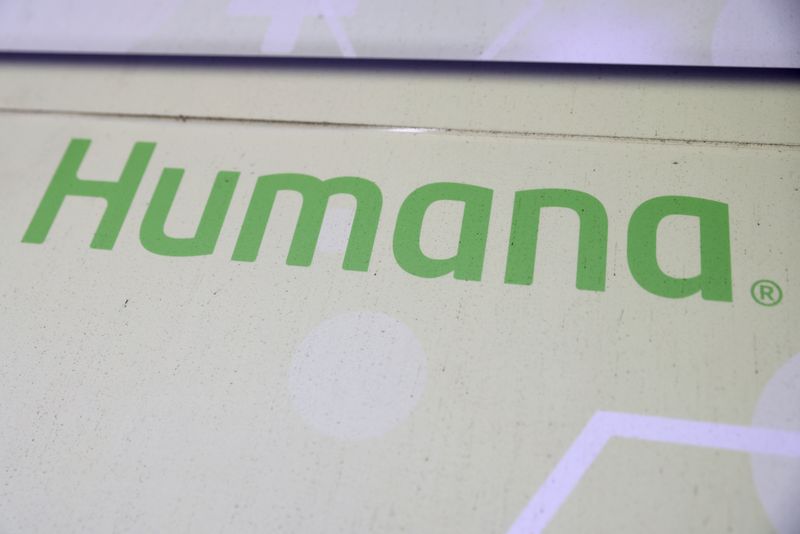By Khushi Mandowara and Leroy Leo
(Reuters) -Humana Inc on Wednesday beat Wall Street estimates for quarterly profit as the health insurer's investment income jumped, even as the company reported higher-than-expected medical costs.
Humana (NYSE:HUM)'s fourth-quarter benefit expense ratio, or the percentage of payout on claims compared to its premiums, fell by 1 percentage point to 87.5%, but was higher than analysts' estimate of 87.20%.
Health insurers' costs were expected to decline on lower COVID-19-related hospitalizations, though there were concerns around a surge in flu and respiratory syncytial virus cases in the last quarter of 2022.
The respiratory season could be the primary reason behind high-than-expected benefit expense ratio, SVB Securities analyst Whit Mayo said.
Humana forecast adjusted earnings per share (EPS) of at least $28 for 2023, in line with analysts' expectations, with Chief Executive Officer Bruce Broussard confident of achieving its 2025 adjusted EPS commitment of $37.
The health insurer said it expects to add at least 625,000 members to its Medicare Advantage plan this year.
Medicare Advantage is the government-supported insurance by private companies for people over 65 years of age and has been growing at a rapid pace, outshining government-provided Medicare plans due to heavy competition among insurers for the same set of customers.
Excluding one-off items, the health insurer reported a profit of $1.62 per share, higher than analysts' average estimate of $1.46 per share, according to Refinitiv data.

The company's $160 million investment income was higher than Wall Street estimates of $136.7 million, Oppenheimer analyst Michael Wiederhorn said.
Humana recorded a loss of $71 million, or 12 cents per share, for the quarter due to a one-time charge of $188 million associated with its $1 billion investment plan for its Medicare business announced in February last year.